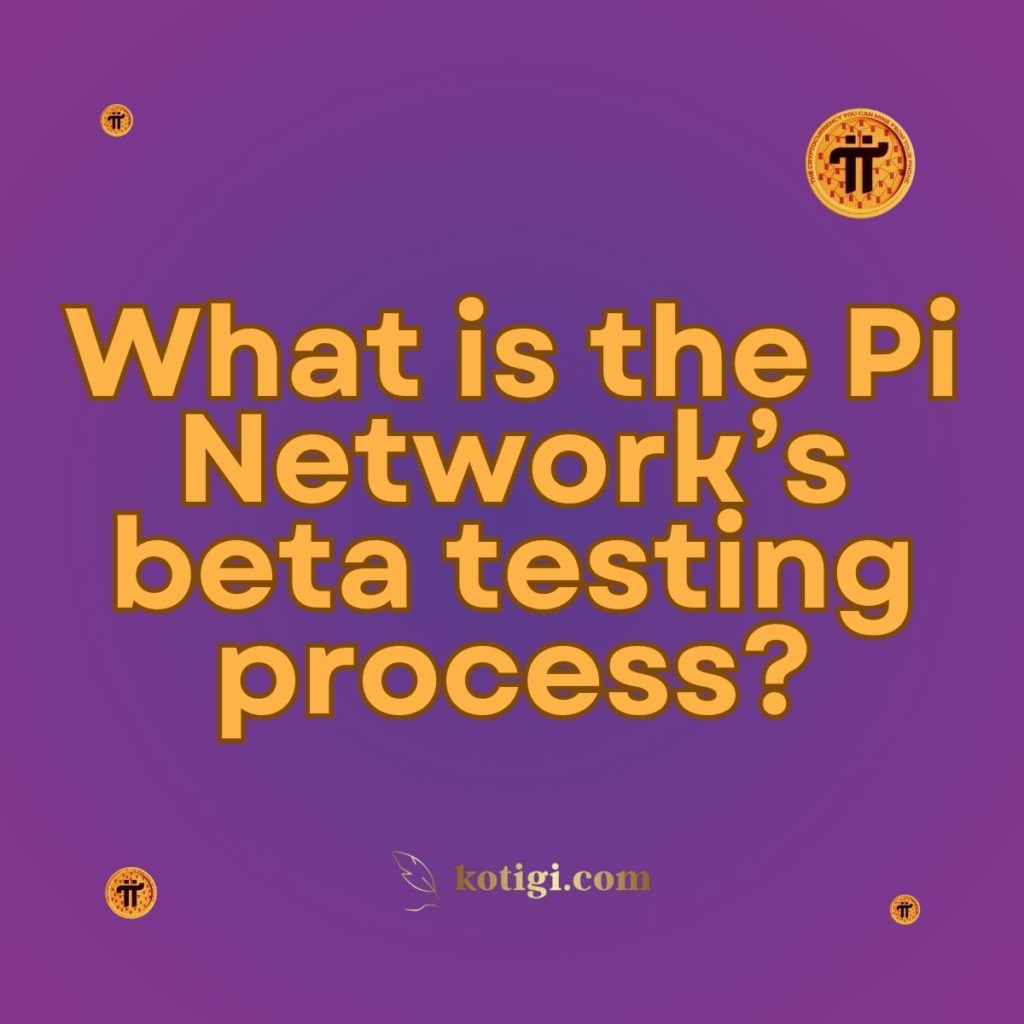
What is the Pi Network’s beta testing process?
The beta testing process of the Pi Network is an integral part of its development, enabling the team to gather user feedback and refine features before a full-scale launch. By engaging users in this phase, the network can ensure that the platform meets community expectations and functions seamlessly. For comprehensive information on the development stages and timelines, visit the Pi Network Roadmap.
Introduction
The Pi Network has garnered significant attention in the blockchain space, primarily due to its unique approach to mining and community involvement. As the platform continues to evolve, the importance of beta testing becomes paramount. Beta testing is a crucial phase in the development process where users can interact with new features, providing valuable insights that inform final adjustments before a full release. This article delves into the Pi Network’s beta testing process, highlighting its importance, structure, and impact on the overall development of the platform.
Overview of the Beta Testing Process
The beta testing process within the Pi Network is designed to engage users actively, allowing them to experience new features and functionalities prior to their public release. This process is vital for ensuring that the platform meets user expectations and functions as intended. By gathering user feedback, the Pi Network can make necessary adjustments and improvements, ultimately enhancing user satisfaction.
Purpose of Beta Testing
The primary objective of beta testing is to identify any issues or bugs within the application before it goes live. This phase serves as an opportunity to test new features in a real-world environment, enabling the development team to gauge user reactions and gather insights into usability. Feedback collected during this phase is invaluable, guiding further iterations and enhancements.
Importance of User Engagement
User engagement is at the heart of the beta testing process. The Pi Network fosters an active community of Pioneers who are eager to contribute to the platform’s development. By involving users in the beta testing phase, the network not only gains valuable feedback but also creates a sense of ownership among its community members. This engagement is crucial for building trust and loyalty within the user base.
Stages of the Beta Testing Process
The beta testing process for the Pi Network involves several distinct stages, each contributing to the overall success of the platform. Understanding these stages helps illuminate the structured approach the network takes to ensure a seamless user experience.
Stage 1: Internal Testing
Before releasing any features to the beta testers, the Pi Network’s development team conducts internal testing. This initial phase involves rigorous testing by the core team to identify and resolve any major issues. The objective is to ensure that the product is stable and ready for external testing.
Stage 2: Closed Beta Testing
Once internal testing is complete, the Pi Network moves to a closed beta testing phase. During this stage, a select group of users is invited to participate. These individuals are typically chosen based on their engagement with the platform and their familiarity with its functionalities. The goal is to test new features in a controlled environment, allowing for focused feedback and observations.
Stage 3: Open Beta Testing
After addressing the feedback from the closed beta phase, the Pi Network transitions to open beta testing. This stage invites a broader audience to participate, allowing more users to experience the new features and provide their insights. The open beta phase is crucial for stress-testing the platform and identifying any remaining issues that may not have been caught during the previous phases.
Stage 4: Feedback Collection and Iteration
Throughout the beta testing process, feedback collection is ongoing. Users are encouraged to share their experiences, report bugs, and suggest improvements. This feedback is meticulously analyzed by the development team, leading to necessary adjustments and iterations. This collaborative approach ensures that the final product aligns closely with user expectations.
Stage 5: Final Release
Following the successful completion of the beta testing process and the incorporation of user feedback, the Pi Network prepares for the final release of the new features. The platform is updated with the refined functionalities, and users are notified about the changes. This final release marks the culmination of the beta testing process and is a testament to the collaborative efforts between the developers and the community.
Role of the Community in Beta Testing
The Pi Network’s community plays a pivotal role in the beta testing process. Engaging users not only enhances the quality of the platform but also fosters a sense of belonging and participation.
Community Feedback Channels
To facilitate effective communication during the beta testing phase, the Pi Network provides various channels for users to submit their feedback. These channels may include dedicated forums, social media groups, and feedback forms integrated into the application. By offering multiple avenues for communication, the network ensures that users can easily share their experiences and suggestions.
Encouraging Participation
The Pi Network actively encourages community members to participate in the beta testing process. This participation can take various forms, from testing new features to providing feedback on usability. By creating a culture of collaboration and openness, the network strengthens its relationship with its user base, resulting in a more robust platform.
Challenges in the Beta Testing Process
While the beta testing process offers numerous benefits, it is not without its challenges. Understanding these challenges helps the Pi Network navigate potential pitfalls and enhance the overall testing experience.
Managing User Expectations
One of the primary challenges in beta testing is managing user expectations. As users engage with new features, they may have varying levels of understanding regarding the nature of beta testing. Some users may expect a fully polished product, while others may be more forgiving of bugs and issues. Clear communication about the purpose and nature of beta testing is crucial for aligning user expectations.
Addressing Feedback Effectively
With a diverse user base participating in beta testing, feedback can vary widely in terms of quality and relevance. The Pi Network’s development team must prioritize and categorize feedback effectively to ensure that the most critical issues are addressed first. This requires careful analysis and a structured approach to feedback management.
Conclusion
The Pi Network’s beta testing process is a vital component of its development strategy, allowing for user engagement and feedback collection. By involving the community in the testing phases, the network ensures that new features are refined and aligned with user expectations. Through a structured approach that includes internal testing, closed and open beta phases, and ongoing feedback collection, the Pi Network is committed to delivering a high-quality product that meets the needs of its users. As the platform continues to evolve, the insights gained from the beta testing process will play a crucial role in shaping its future.
Key Takeaways:
- The beta testing process is crucial for gathering user feedback and refining features before full-scale launch.
- The process includes multiple stages: internal testing, closed beta, open beta, feedback collection, and final release.
- User engagement is vital, fostering a sense of ownership and community within the platform.
- Community feedback channels facilitate effective communication and encourage participation.
- Managing user expectations and addressing feedback effectively are key challenges in the beta testing process.
- The insights gained from beta testing shape the future development of the Pi Network, ensuring a user-centric approach.





